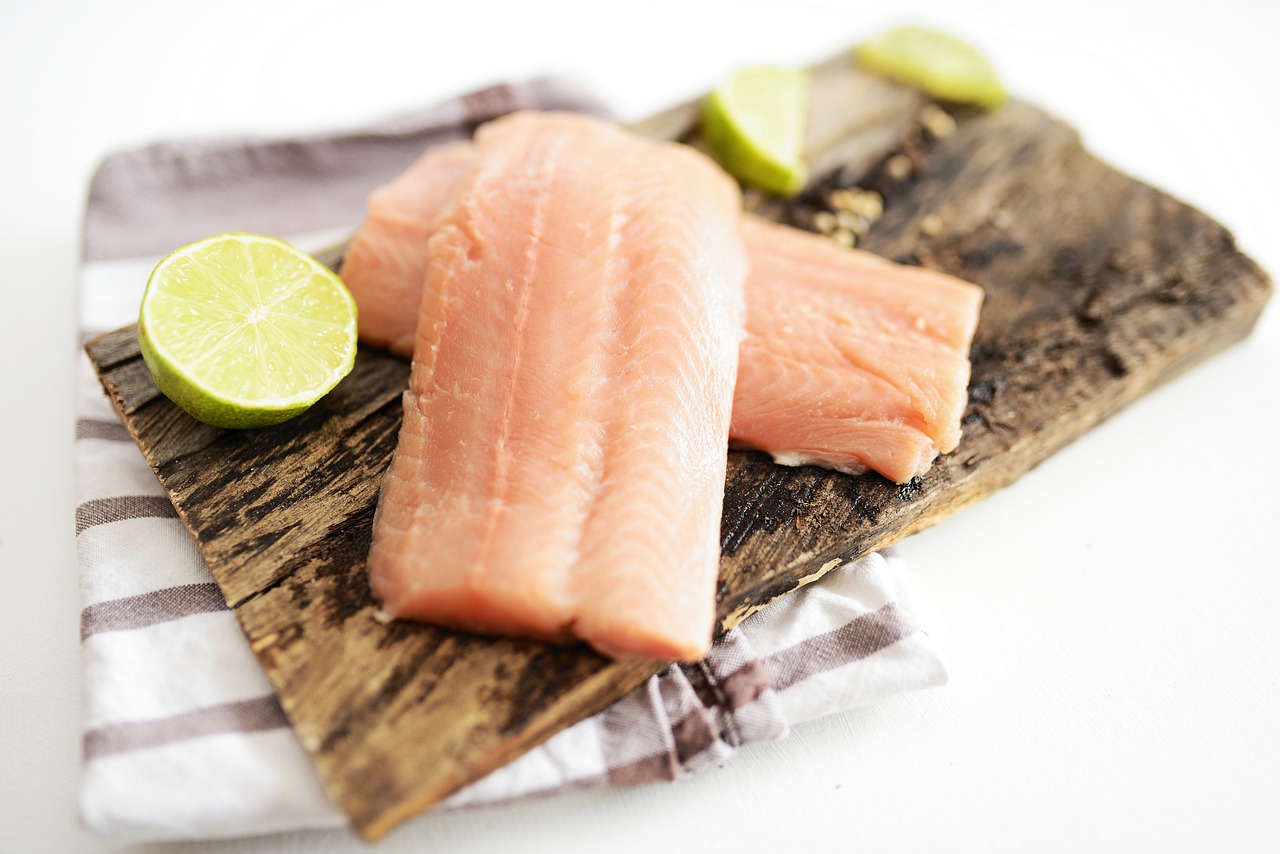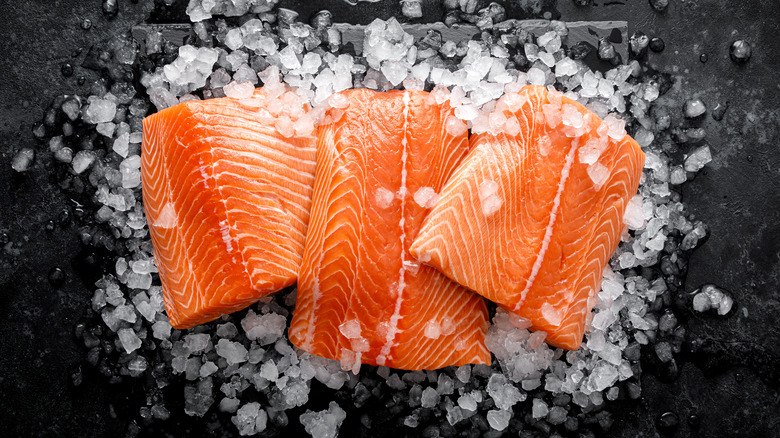Salmon is one of the most popular and nutritious fish on the market Rich in omega-3 fatty acids and protein, salmon makes a healthy addition to any diet However, one downside to cooking salmon at home is dealing with the pesky pin bones. So what exactly are pin bones, and can you eat them?
What Are Pin Bones?
Pin bones are the small, thin, flexible bones that run down the center of a salmon fillet. They are not actually bones at all, but calcified collagen fibers that help the fish sense nearby movement in the water Pin bones range in size from less than an inch to several inches long. While relatively soft, they can still pose an unpleasant surprise if accidentally consumed.
When you run your fingers along an uncooked salmon fillet, you can easily feel the pin bones protruding. Though thin, they are quite firm and anchored in the flesh, so they do not dislodge easily. This makes pin bones a nuisance for home cooks preparing salmon.
Are Pin Bones Safe to Eat?
While you may be tempted to simply leave the pin bones in, are they actually safe to eat? The answer is yes, pin bones are completely edible.
Pin bones are small, pliable, and easy to chew. They pose little risk of injury or indigestion when consumed. In fact, salmon pin bones are routinely eaten in many parts of the world, including Japan, Norway, and native North American cultures.
Some people even enjoy the added crunch and calcium provided by eating the soft pin bones. Especially when salmon is canned or smoked, the bones become rubbery and easy to chew.
So if you accidentally ingest a salmon pin bone, there is no need to worry. You can safely swallow it without harm.
Reasons to Remove Pin Bones
While pin bones won’t hurt you there are still good reasons to remove them before cooking salmon
-
Improved texture – Pin bones can alter the smooth, tender texture expected from salmon flesh. Removing them helps ensure a pleasant mouthfeel.
-
Avoids mouth injuries – Though not sharp, pin bones could potentially puncture or scrape delicate mouth tissues if chewed improperly. Pulling them prevents this risk.
-
Prevents choking – While rare, a loose pin bone could become lodged in the throat if accidentally swallowed lengthwise. Taking them out eliminates this danger.
-
Better appearance – Pin bones protruding from the flesh are not visually appealing. Removing them gives a cleaner, more appetizing presentation.
-
Enhances enjoyment – Finding a surprise bone during a meal can be startling and disruptive. Taking them out prevents this and allows diners to relax and focus on the flavor.
So even though pin bones don’t pose a health risk, removing them before cooking makes salmon more pleasurable to eat.
How to Remove Pin Bones
Removing pin bones only takes a few minutes. Here are some tips:
-
Run your fingers along the flesh to feel for the bones. Their tips will be poking out.
-
Use needle-nose pliers, tweezers, or a special pin bone removal tool. Regular tweezers may not have enough grip.
-
Grasp the exposed tip firmly and pull straight out at an angle along the row.
-
Work slowly and carefully to avoid tearing the flesh.
-
Check thoroughly to ensure you remove all the bones.
-
Rinse afterward and pat dry before seasoning and cooking.
Can You Cook Salmon with Pin Bones In?
While not recommended, you can technically cook salmon without removing the pin bones first. Use caution if doing so:
-
Opt for moist cooking methods like poaching, steaming, or baking en papillotte. Dry heat can make bones brittle and sharp.
-
Eat carefully, slowly, and intentionally to avoid choking. Pick out any bones you encounter.
-
Pull out bones once cooked if possible. They slide out easier when the salmon is heated.
-
Avoid serving to children, elderly, or others with chewing/swallowing difficulties to prevent choking.
-
Alert guests that the salmon contains bones so they can be vigilant when eating.
Overall, taking a little time upfront to remove pin bones before cooking makes enjoying salmon a more pleasant, elegant experience. But in a pinch, it won’t harm you to cook and consume salmon pin bones. Just be attentive when eating to prevent any choking or other risks. With care and proper preparation, salmon pin bones can be perfectly edible.

Pin bones are a choking hazard

Though it seems a bit unusual, pin bones are actually edible, according to the Alaskan Salmon Company. Like salmon, theyre nutrient-rich and healthy for you. However, eating pin bones does come with risks. If you choose to leave them in your salmon filet, one could easily become stuck in your throat, causing you to choke. According to Healthline, there are some actions you can take if you get a pin bone stuck in your throat, such as swallowing one to two tablespoons of olive oil or taking a bite of a banana.
That being said, its probably best just to avoid the risk of choking on pin bones altogether by removing them from your salmon filet. Theres a quick and easy method for this — all youll need is a pair of tweezers or pliers. Per the Wild Alaskan Company, the first step in pin bone removal is locating the pin bones. You can do this by pressing down on the salmon filet, causing the pin bones to stick up. After finding the pin bones, simply use pliers or tweezers to pull them from the filet. Do not pull the pin bones in an upward or opposite direction, as this can damage your filet and make it look less appealing.
How to Remove Pin Bones From Salmon in Less Than 2 Minutes
FAQ
FAQ
Is it okay to eat pin bones in salmon?
While Salmon pin bones are supposedly soft and flexible, that does not mean that these bones are not dangerous to consume as they can be potential choking …
Can you eat the bones in can salmon?
The small, soft bones that are usually present in canned salmon are perfectly edible and provide a rich source of calcium. The canning process makes the bones soft enough to chew and mix well with the meat. My mom always left the bones in the salmon; I do as well.
What are the sharp pieces in salmon?
They’re calcified nerve endings called “floating bones” because they’re not attached to the main skeleton. In a typical salmon fillet, you’ll find a single line of these pin bones running diagonally from the collar end (where the head was) toward the middle of the fillet.
How to get pin bones out of salmon?
To remove pin bones from salmon, use tweezers or needle-nose pliers to grasp the tiny, needle-like bones and pull them out along their length, away from the salmon fillet.
